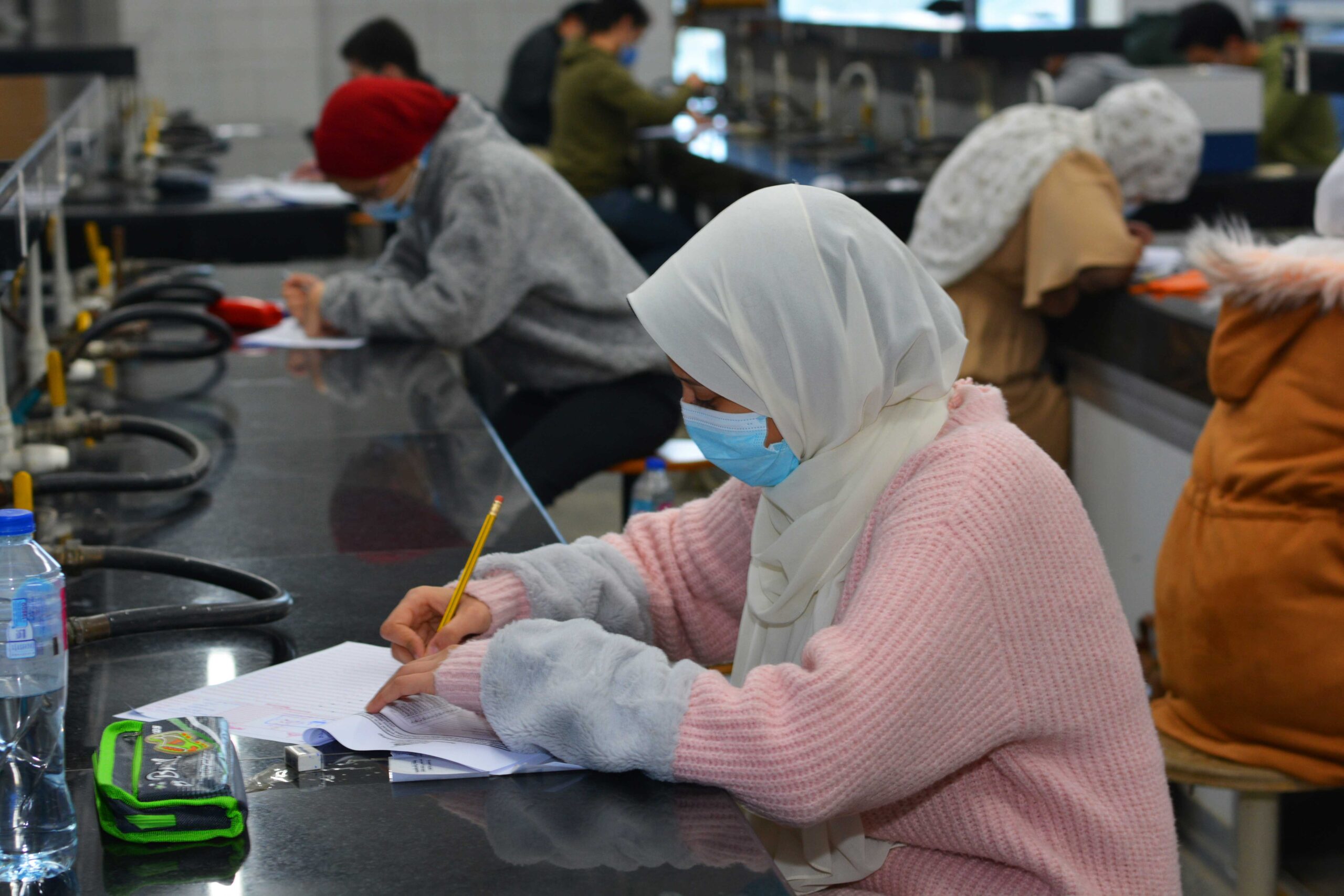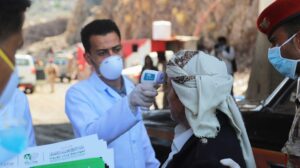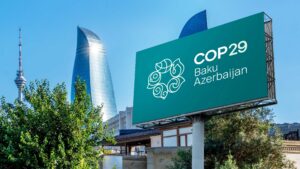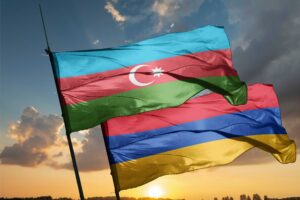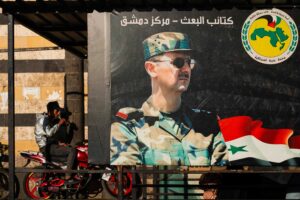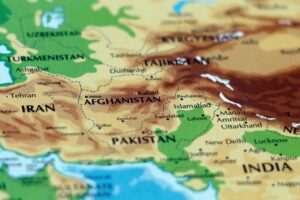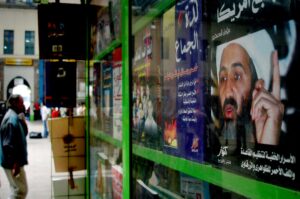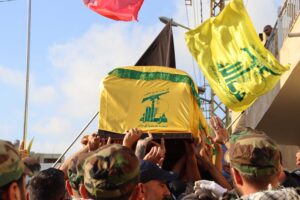Introduction
The term ‘comorbidity’ refers to conditions that occur concurrently with a primary illness which present an increased risk to life and health outcomes.[1] Hypertension and diabetes are two possible comorbidities of COVID-19.[2] In this article, I place this medical term in a political context and argue that the combination of authoritarian politics and COVID-19 presents such an increased risk to life and health outcomes so as to warrant the term ‘comorbidity’. It is, in particular, the politically “catalytic effect of crisis” that makes coronavirus such a threat to human rights and civil liberties within authoritarian states.[3] This threat lies in the passing of laws by authoritarian leaders without much scrutiny and the removal of what little oversight and civil liberties existed, all with the ‘consent’ of the governed due to the ostensible necessity of such measures for the public good. As such, while this pandemic poses serious risks to life by itself, its politicisation within authoritarian states poses its own threats.
In April 2020, Human Rights Watch warned that COVID-19 might provide a “convenient pretext to silence critics and consolidate power”, and this warning has proven true.[3] In Hungary, Orbán continued his consolidation of power by codifying his right to rule by decree with no time limit.[4] In Israel, a bill was passed enabling the government to enact emergency regulations without parliamentary oversight.[5] In Russia, prisons have become increasingly dangerous – not just due to the prevalence of the virus, but due to new laws limiting transparency and safeguarding, ostensibly in the interests of national security.[6] These kinds of measures can see unnecessary deaths when guided by political rather than humanitarian goals. A crisis, if effectively securitized, can provide the context needed to reduce the threat of political opposition without much damage to the regime’s legitimacy. This potential for consolidation of power and stifling of political opposition is significant. The reality is that this opportunity to exploit a crisis and consolidate power could lead to a curtailment of human rights not only during the pandemic, but for a lifetime afterwards.
Some Theoretical Background
Understanding the relationship between crisis, legitimacy and authoritarianism is vital in assessing how the COVID-19 pandemic might allow the consolidation of authoritarian power. Legitimacy, as set out by Gerschewski (2013), is essential for authoritarian regime survival as it creates “consent, compliance with the rules, passive obedience, or mere toleration”.[7] Due to the nature of legitimacy, there exists a nexus between it and repression, wherein too much repression – such as violent crackdowns – might serve to destabilize the state. Thus, discursive justifications for repression are vital as they limit the costs of repression and serve to maintain legitimacy and stability while removing threats to the regime.[8]
The potential for such discursive justification exists in moments of crisis. The presentation of curtailing civil liberties as a necessary evil – a noble sacrifice for the public good – is evident in the history of national crises and authoritarianism. Famously, it was emergency powers granted in 1933, in the wake of the Reichstag fire that allowed Hitler to establish his dictatorship by curtailing freedoms of the press and civil rights.[9] These powers remained in place long after the fire – the moment of crisis – itself. The presentation of civil liberties contra national security is a key part of the authoritarian playbook, and public health emergencies are no exception. Indeed, the fight against infectious disease transmission has long been at odds with civil freedoms. In 1986, Gostin noted the “potentially massive infringement of individual liberty, autonomy, and privacy” required when attempting to stop the spread of disease.[10] Past respiratory disease epidemics, such as SARS and MERS, saw the same debates regarding the morality of lockdown and emergency laws that we see today.[11] The use of a public health crisis as a “pretext for governments to curtail or erode fundamental rights” seen in this latest pandemic is, therefore not new.[12] It should also be noted that such actions are not exclusive to authoritarian regimes. In the USA, Black Lives Matter protestors have been arrested under laws relating to coronavirus, infringing on their democratic right to protest.[13]
The Middle East provides a particularly interesting context for discussing authoritarian endurance and adaptability. While hardly exclusive to the region, the resilience of authoritarianism across the Middle East (as discussed in Stacher 2012, Posusney & Angrist 2005, and Schlumberger 2007) is testament to the adaptability of Middle Eastern regimes to crises, and the COVID crisis is no exception. Iran, as the regional epicentre of the crisis, with its stable authoritarian regime since 1979, provides a fascinating case study through which to explore the potential threats to civil liberties and human rights posed by the pandemic. Using this case study, this article will then highlight key areas in which authoritarian states might take advantage of the current public health emergency.
The case of Iran
Since the start of the pandemic, Iranian authorities have confirmed over 12,000 deaths [14], however sources – including some within the government – claim this to be severe under-reporting.[15] As such, Iranian authorities have undertaken strict measures to control the rate of infection and quell public fear. This has included prison releases [16], cancellations of mass gatherings and the closure of holy sites.[17] Despite efforts, Iran reports on average 3,000 new infections daily.[18] Continuing US sanctions throughout the pandemic have been accused of worsening the situation, with a government spokesman terming them ‘economic’ and ‘medical’ terrorism.[19] Iran’s approach might not be a public health success, however it can be seen as a success for authoritarianism in the country. So far, the potentially seriously regime-destabilising effects of the pandemic appear to be limited, while power within the state has been increasingly consolidated with the Supreme Leader and his supporters.
Formally, article 79 of the Iranian Constitution forbids a state of martial (emergency) law.[20] While this limits the short term controls that the government can take, it means the measures that are taken have no formal, constitutional time limit. Thus, the government has implemented new laws, including anti-fake news laws and partial lockdowns.[21] Despite the democratic presidential-parliamentary system in place, the Iranian regime is ultimately an autocratic theocracy directed by Supreme Leader Ayatollah Khamenei. The Iranian Revolutionary Guard Corps (IRGC), a group closely aligned with the Supreme Leader’s ideologically hard-line outlook, has been at the forefront of combatting the virus, thus consolidating power and strengthening the guard’s political standing relative to current-President Rouhani.[22] Actions such as setting up field hospitals and taking the lead on anti-COVID technology – such as an alleged device that detects every coronavirus case within 100m [23] – sets up the IRGC as ‘heroes’ battling against the virus. Indeed, the use of the language of war in discourse itself helps the state as it discursively legitimates ‘inevitable’ sacrifices.[24]
Iran initially censored its coronavirus outbreak. Already-limited press freedoms have become even more limited throughout the pandemic, with Iran falling three places on the World Press Freedom Index.[25] Contributing to this was the ruling in late February that there would be a three-year sentence for spreading rumours or fake news about the virus.[26] This phrasing is vague, and it appears that any apparent contradiction of the official figures could be taken as a violation. By the end of April, 3,600 had been arrested under the auspices of this ruling.[27] Some recent arrests have reportedly been politically motivated, such as the targeting of dissenters potentially associated with the MEK (People’s Mujahedin Organization of Iran).[28] There have also been allegations of targeted, government-sponsored harassment of political prisoners on COVID wards, in particular of human rights activists.[29]
Another potential threat to rights in Iran comes from technology – of particular note, the country’s equivalent of a test and trace app. Recommended by the Ministry of Health, many Iranians received a message to their smartphones instructing them to download the app ‘AC19’, which claimed to diagnose coronavirus. Once downloaded, the app would proceed to provide the government with personal information, including “names, addresses, dates of birth” and real time tracking and location data. According to a tweet from the Iranian ICT minister, over 3.5 million have downloaded the app and thus have shared this information.[30]
Key threats to civil liberties in the coronavirus crisis
From the above case study, we can draw four key areas of concern:
‘Sticky’ policies
Laws implemented during the crisis have the potential to remain in situ – these are ‘sticky’ policies in that they are harder for opponents to remove than they were to put in place. With continuing high levels of infections and the potential for a second wave, laws related to coronavirus are likely to ‘stick’ as they might be discursively legitimated for some time yet. In the case of Iran, the constitutional opposition to martial law means the Rouhani administration has sought to fit policy changes into the existing legal framework. This means that measures taken do not have an ‘expiration date’ that would otherwise be mandated by article 76. As such, non-directly health related policies passed during this moment of crisis may well remain in place in the aftermath, posing a lasting threat to civil liberties, press freedoms and human rights.
The strengthening role of security services in public health management
The use of the language of war serves to normalise an idea of ‘necessary sacrifice’. It also helps to legitimate the role of security services in handling the crisis. This helps to discursively support the active role of security services intervening in ordinary civilian life. This broadens the sphere of involvement that security forces might have, widening the intersection between military and political actors, concentrating power and capacity for violence within the revolutionary regime.
Arrests and pandemic prison-time
Laws that do not clearly define who they might affect, such as the arrest of people ‘spreading rumours about the virus’, make infractions difficult to disprove and grants the government great power to define who might be acting criminally under such circumstances. For example, any criticism of the government could be interpreted as ‘spreading rumours about their management of the virus’ – thus giving the state cause to arrest any political dissidents. Additionally, during a pandemic, the threat of prison becomes far greater – the rapid spread of COVID-19 amongst prison populations creates a very real chance of serious illness or death following arrest.
Track & Trace apps
Track and trace apps can take advantage of fear among the general population to invade individual privacy and serve governments interests. The potential to make use of such apps to eliminate political dissent is clear: the combination of personal identity data with real time tracking would allow governments to monitor those they considered a threat.
Conclusion
The response of each government to the COVID-19 pandemic is unique. In the case of Iran, the control of information has been prioritized alongside attempts to control the disease itself. Following the pandemic, a shift in the government is eminently possible – with President Rouhani facing the end of his term limit, the upcoming 2021 Presidential elections presents an opportunity for the IRGC to further consolidate power under a candidate like Parviz Fattah.[31] The IRGC is, in turn, closely controlled by and allied to the Supreme Leader, who, so far throughout this tumultuous time has remained incredibly stable. Iran is yet to experience the full extent of the coronavirus crisis, but while the public health response has been limited, the IRCG, and other factions allied to the Supreme Leader have acted effectively in working to consolidate power and curtail civil liberties.
Measures restricting freedoms are, of course, necessary in a pandemic scenario. A lockdown to stop the spread of the disease has been implemented by almost every country in the world, of every political orientation. Attempting to combat the spread of misinformation and fear make sense, as does the collection of personal data in order to track the spread and inform those potentially infected. The mobilisation of military forces and security services to help support and alleviate pressure from a country’s civilian health service is also a reasonable step in times of crisis. All of these measures are, therefore, justifiable. However, no matter how reasonable, such infringements must be considered critically.
Therein lies the benefit of considering authoritarian politics as a comorbidity of COVID-19: in that it highlights how the risks to life from the pandemic come not only from the virus but from how political leaders respond to the virus. Making use of a medical frame of reference allows for an understanding of how the interaction between the public health crisis and authoritarianism might bring about potential ‘complications’. Scholars, civil rights activists and policy makers can draw lessons and warnings from the actions undertaken during the pandemic by authoritarian leaders today and further our understanding of authoritarian endurance. The use of the very real public health crisis for political gain signifies a shift towards authoritarianism that might, in some cases, long outlast the virus itself.
[1] Valderas, J et al. (Jul 2009). Defining Comorbidity: Implications for Understanding Health and Health Services. Annals of Family Medicine. 7 (4), pp. 357–363.
[2] Guan WJ, Liang WH, Zhao Y, et al.. (May 2020). Comorbidity and its impact on 1590 patients with Covid-19 in China: A Nationwide Analysis. European Respiratory Journal. 55 (5).
[3] Chan, HY. (Dec 2013). Crisis Politics in Authoritarian Regimes: How Crises Catalyse Changes under the State–Society Interactive Framework. Journal of Contingencies and Crisis Management. 21 (4), pp. 200-210.
[4] Roth, K. (3 April 2020). How Authoritarians Are Exploiting the COVID-19 Crisis to Grab Power. Human Rights Watch. Available: https://www.hrw.org/news/2020/04/03/how-authoritarians-are-exploiting-covid-19-crisis-grab-power. Last accessed 9 Jul 2020.
[5] Haltiwanger, J. (1 Apr 2020). The coronavirus just created a new dictator in Europe and has emboldened the toxic behavior of authoritarians worldwide. Business Insider. Available: https://www.businessinsider.com/coronavirus-created-new-dictator-emboldens-authoritarians-worldwide-2020-4. Last accessed 9 Jul 2020.
[6] Cohen, U. (7 Jul 2020). Emergency Law Grants Israeli Gov’t Temporary Unchecked Powers to Deal with Pandemic. The Media Line. Available: https://themedialine.org/by-region/israel-passes-emergency-law-granting-govt-temporary-unchecked-powers-to-impose-antivirus-restrictions/. Last accessed 10 Jul 2020.
[7] Sauer, P and Gerschkovich, E. (27 Apr 2020). Inside Russia’s Secretive Prisons as Coronavirus Takes Hold. The Moscow Times. Available: https://www.themoscowtimes.com/2020/04/27/inside-russias-secretive-prisons-as-coronavirus-takes-hold-a70108. Last accessed 10 Jul 2020.
[8] Gerschewski, J. (2013). The three pillars of stability: legitimation, repression, and co-optation in autocratic regimes. Democratization. 20 (1), pp. 13-38.
[9] Edel, M and Josua, M. (2018). How authoritarian rulers seek to legitimize repression: framing mass killings in Egypt and Uzbekistan. Democratization. 25 (5), pp. 882-900.
[10] Herf, J. (19 Feb 2019). Emergency powers helped Hitler’s rise. Germany has avoided them ever since.. Available: https://www.washingtonpost.com/outlook/2019/02/19/emergency-powers-helped-hitlers-rise-germany-has-avoided-them-ever-since/. Last accessed 11 Jul 2020.
[11] Gostin, L. (1986). The future of communicable disease control: toward a new concept in public health law. The Millbank Quarterly. 64 (1), p. 79.
[12] Gostin, L et al. (Dec 2003). Ethical and Legal Challenges Posed by Severe Acute Respiratory Syndrome. Health Law and Ethics. 290 (24), pp. 3229-3237
[13] Bayer, R. (Dec 2007). The continuing tensions between individual rights and public health. Talking Point on public health versus civil liberties. EMBO Reports. 8 (12), pp. 1099–1103.
[14] Gottbrath, LW et al. (1 Jun 2020). George Floyd protesters undeterred by US curfews: Live updates. Al Jazeera. Available: https://www.aljazeera.com/news/2020/05/george-floyd-curfews-extended-protests-spread-live-200531204512954.html. Last accessed 11 Jul 2020.
[15] Reuters News Team. (8 Jul 2020). Iran coronavirus death toll exceeds 12,000 as lockdown curbs ease. Reuters. Available: https://uk.reuters.com/article/us-health-coronavirus-iran/iran-coronavirus-death-toll-exceeds-12000-as-lockdown-curbs-ease-idUKKBN2491GY. Last accessed 11 Jul 2020.
[16] Arab Weekly Staff. (19 Apr 2020). Iran admits to under-reporting coronavirus figures as it faces biggest crisis since 1979. The Arab Weekly. Available: https://thearabweekly.com/iran-admits-under-reporting-coronavirus-figures-it-faces-biggest-crisis-1979. Last accessed 10 Jul 2020.
[17] Zaghari-Ratcliffe, N. (3 Mar 2020). Coronavirus: Iran temporarily frees 54,000 prisoners to combat spread. BBC News. Available: https://www.bbc.com/news/world-middle-east-51723398. Last accessed 11 Jul 2020.
[18] Kirkpatrick, D et al. (24 Feb 2020). ‘Recipe for a Massive Viral Outbreak’: Iran Emerges as a Worldwide Threat. The New York Times. Available: https://www.nytimes.com/2020/02/24/world/middleeast/coronavirus-iran.html. Last accessed 11 Jul 2020.
[19] Cunningham, E. (5 June 2020). Iran’s coronavirus cases surge again as strategic province becomes new epicenter. The Washington Post. Available: https://www.washingtonpost.com/world/middle_east/irans-coronavirus-cases-surge-again-as-strategic-province-becomes-new-epicenter/2020/06/05/6a5e4f9e-a021-11ea-be06-af5514ee0385_story.html. Last accessed 10 Jul 2020.
[20] Reality Check Team. (17 Apr 2020). Coronavirus: Iran and the US trade blame over sanctions. BBC News. Available: https://www.bbc.co.uk/news/world-middle-east-52218656. Last accessed 11 Jul 2020.
[21] Alasti, S. (24 Apr 2020). The Iranian Legal Response to Covid-19: A Constitutional Analysis of Coronavirus Lockdown. Verfassungsblog (Deutschland). Available: https://verfassungsblog.de/the-iranian-legal-response-to-covid-19-a-constitutional-analysis-of-coronavirus-lockdown/. Last accessed 10 Jul 2020.
[22] Bickioglu, Z and Ahishali, M. (10 May 2020). Iran arrests 320 over ‘provocative’ COVID-19 posts. Anadolu Agency. Available: https://www.aa.com.tr/en/latest-on-coronavirus-outbreak/iran-arrests-320-over-provocative-covid-19-posts/1835574. Last accessed 11 Jul 2020.
[23] Tabatabai, A. (29 Apr 2020). Iran’s Revolutionary Guards Play Politics With the Coronavirus. Foreign Affairs. Available: https://www.foreignaffairs.com/articles/iran/2020-04-29/irans-revolutionary-guards-play-politics-coronavirus. Last accessed 12 Jul 2020.
[24] Fazeli, Y. (15 Apr 2020). Coronavirus: Iran’s IRGC unveils new device it says can detect the virus. Al-Arabiya. Available: https://english.alarabiya.net/en/coronavirus/2020/04/15/IRGC-unveils-new-alleged-coronavirus-detection-device. Last accessed 12 Jul 2020.
[25] Kalbasi, K. (9 Apr 2020). Iran: Coronavirus and the media. European Journalism Observatory. Available: https://en.ejo.ch/ethics-quality/iran-coronavirus-and-the-media. Last accessed 11 Jul 2020.
[26] BBC News Team. (21 Apr 2020). Coronavirus further threatening media freedom, says Reporters Without Borders. BBCNews. Available: https://www.bbc.co.uk/news/world-52363305. Last accessed 10 Jul 2020.
[27] Tehran Times Team. (26 Feb 2020). Anybody who spreads fake news about coronavirus will get 3-year sentence: Iranian MP. Tehran Times. Available: https://www.tehrantimes.com/news/445586/Anybody-who-spreads-fake-news-about-coronavirus-will-get-3-year. Last accessed 11 Jul 2020.
[28] Radio Free Europe Team. (29 Apr 2020). Iran Says 3,600 Arrested For Spreading Coronavirus-Related Rumors. Radio Free Europe/Radio Liberty. Available: https://www.rferl.org/a/iran-says-3600-arrested-for-spreading-coronavirus-related-rumors/30583656.html. Last accessed 11 Jul 2020.
[29] ia, S. (11 Jul 2020). Iran: New Wave of Arrests Is Latest Sign of Iranian Regime’s Vulnerability. NCR Iran. Available: https://www.ncr-iran.org/en/news/iran-resistance/iran-new-wave-of-arrests-is-latest-sign-of-iranian-regimes-vulnerability/. Last accessed 12 Jul 2020.
[30] Boniandi, N. (23 Apr 2020). Why Iran’s coronavirus pandemic is also a crisis of human rights. The Washington Post. Available: https://www.washingtonpost.com/opinions/2020/04/23/why-irans-coronavirus-pandemic-is-also-crisis-human-rights/. Last accessed 12 Jul 2020.
[31] Gilbert, D. (14 Mar 2020). Iran Launched an App That Claimed to Diagnose Coronavirus. Instead, It Collected Location Data on Millions of People. VICE News. Available: https://www.vice.com/en_us/article/epgkmz/iran-launched-an-app-that-claimed-to-diagnose-coronavirus-instead-it-collected-location-data-on-millions-of-people. Last accessed 9 Jul 2020.
[32] Aarabi, K. (1 Jul 2020). The IRGC eyes Iran’s presidency. Middle East Institute. Available: https://www.mei.edu/publications/irgc-eyes-irans-presidency. Last accessed 11 Jul 2020.


